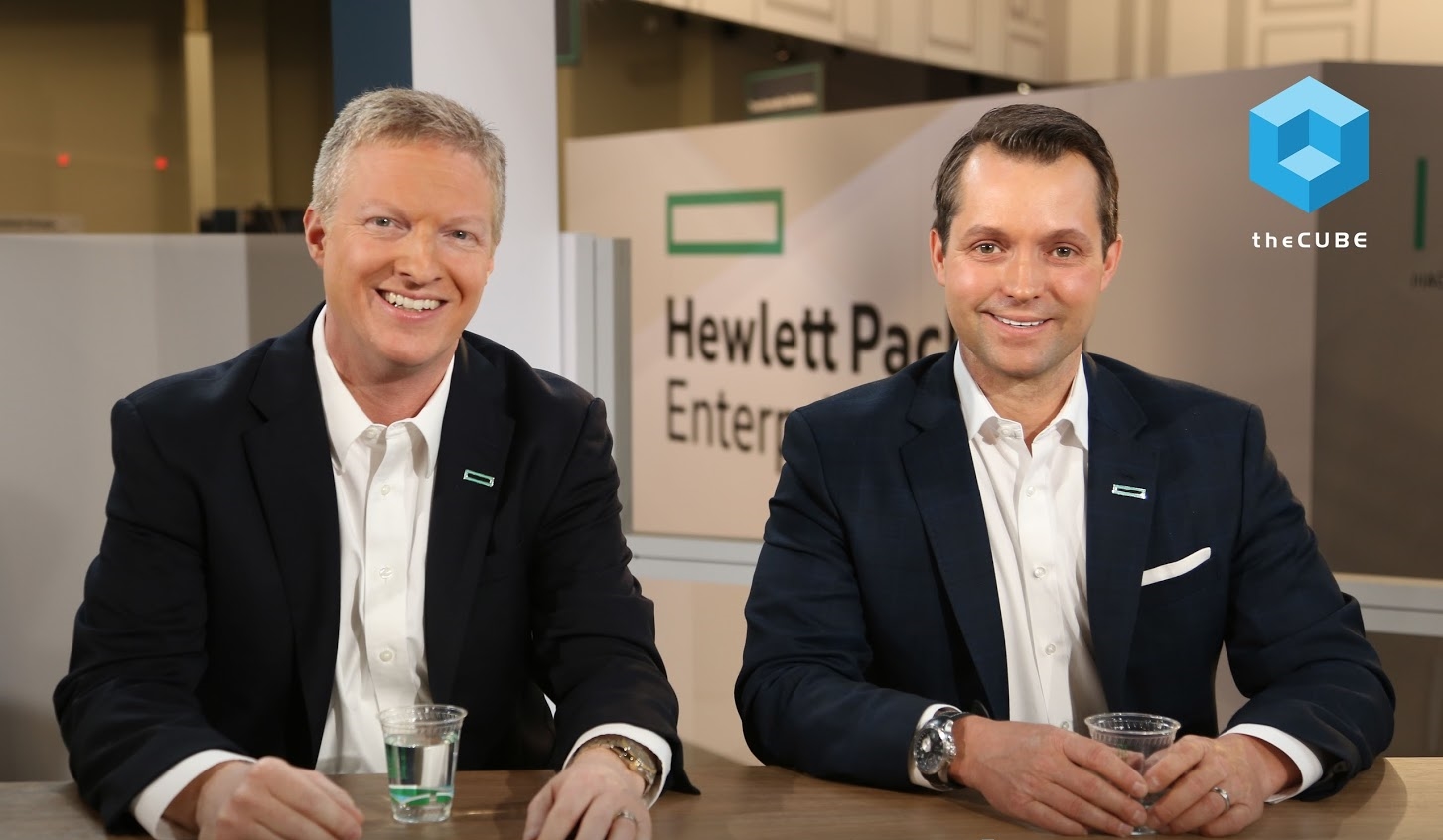 BIG DATA
BIG DATA
 BIG DATA
BIG DATA
 BIG DATA
BIG DATA
As content delivery, infrastructure and other fundamental aspects of technologically driven businesses evolve with the times, the shape of tech itself is going through considerable redefining, according to Justin Hotard (pictured, right), vice president and general manager of hyperscale and OEM Solutions at Hewlett Packard Enterprise Co.
“The reality is, the market is fragmenting because more and more businesses are moving to an ‘as a service’ model,” Hotard said. “There’s business as a service, software as a service, and so each of these customers has a unique business model … and I don’t think it’s going to change.”
Hotard and Curt Belusar (pictured, left), senior director of hyperscale engineering at HPE, joined John Furrier (@furrier) and Dave Vellante (@dvellante), co-hosts of theCUBE, SiliconANGLE Media’s mobile live streaming studio, at the HPE Discover event in Las Vegas, Nevada. They discussed market adaptation, the trend toward customization, and the coming together of storage and memory. (*Disclosure below.)
“What we see is a very dynamic market where everybody’s trying to figure out their business model, build their services and respond to all these changes,” Hotard said. “What we see is a lot of … our customers and service providers need a lot of flexibility. They need to be able to respond to these changes; they also need to be able to scale. And globalization is a huge trend.”
HPE is seeing a transition to more data at the edge, according to Belusar. “And so you’re growing both edge data centers and central data centers at the same time.”
As that change comes, Belusar expects to see the public cloud providers continue to expand from the top tier downward. “It’s ‘everything as a service’; it’s starting to explode,” he said.
And with that envelopment of so many business and operational aspects under the umbrella of service deployment, tailoring the structures to a business’ specific needs will become standard, Belusar predicted.
“We’re going to see customization at both ends; it’s just going to be more customization with the top-tier customers,” he said. “The more that they can make their cloud or grid look uniform, it becomes easier to service; it becomes easier to maintain.”
Both HPE representatives also highlighted the ways in which physical realities are also an important aspect of infrastructure, as the need to be able to handle demands of electrical power, real estate and proximity places limits on growth and scalability.
But aside from those enterprise-specific issues, they anticipated some big developments in the tech sphere of the near future.
“We’re seeing a continuation and furthering of some of the technologies that we’ve seen in the public clouds rolling out, starting to happen with the enterprise,” Belusar said, pointing out the rise of alternate processors, such as the second generation of ARM64, an evolution of the original ARM architecture.
But what had him most excited was “the ability to pull data off of drives much quicker,” which he described as “shifting everything. … Storage and memory are starting to come together.”
Watch the complete video interview below, and be sure to check out more of SiliconANGLE’s and theCUBE’s independent editorial coverage of HPE Discover US 2017. (* Disclosure: TheCUBE is a paid media partner for HPE Discover US 2017. Neither Hewlett Packard Enterprise Co. nor other sponsors have editorial control on theCUBE or SiliconANGLE.)
Support our mission to keep content open and free by engaging with theCUBE community. Join theCUBE’s Alumni Trust Network, where technology leaders connect, share intelligence and create opportunities.
Founded by tech visionaries John Furrier and Dave Vellante, SiliconANGLE Media has built a dynamic ecosystem of industry-leading digital media brands that reach 15+ million elite tech professionals. Our new proprietary theCUBE AI Video Cloud is breaking ground in audience interaction, leveraging theCUBEai.com neural network to help technology companies make data-driven decisions and stay at the forefront of industry conversations.